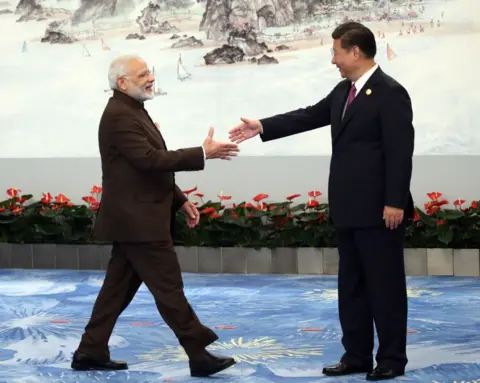India and China Aim to Mend Ties Amid U.S. Tariffs
As Prime Minister Narendra Modi lands in China, the repercussions of Donald Trump’s U.S. tariffs loom large over bilateral trade. India is facing a staggering 50% tariff on key exports to the U.S., jeopardizing its ambitious economic goals and vibrant export sector.
China’s President Xi Jinping is also under pressure to revive a struggling economy exacerbated by U.S. trade policies. The backdrop presents an opportunity for both leaders to reset a historically fraught relationship, characterized by distrust stemming largely from unresolved border disputes.
Experts emphasize the global significance of their interactions, noting that a stable India-China relationship could impact international dynamics. Modi's visit is seen as a potential turning point—a chance to create economic partnerships while recognizing the challenges of their complicated history.
The growing economies of India and China, ranked fifth and second in size respectively, hold prospects for collaboration. With an IMF projection of India’s economy growing to $5 trillion, the partnership could pivot towards joint manufacturing and shared supply chains, particularly in technology and electronics.
However, territorial disputes, particularly the lasting impact of the Galwan Valley clash, raise questions about the sustainability of any newfound alliance. Direct flights may resume, and visa regulations could ease, but key geopolitical tensions remain problematic.
While the recent economic fallout casts a shadow over negotiations, Modi’s visit to China signifies his recognition of strategic options available beyond the U.S. The leaders will need to navigate their differences carefully as both seek to reinforce their respective positions within a multipolar global order.




















